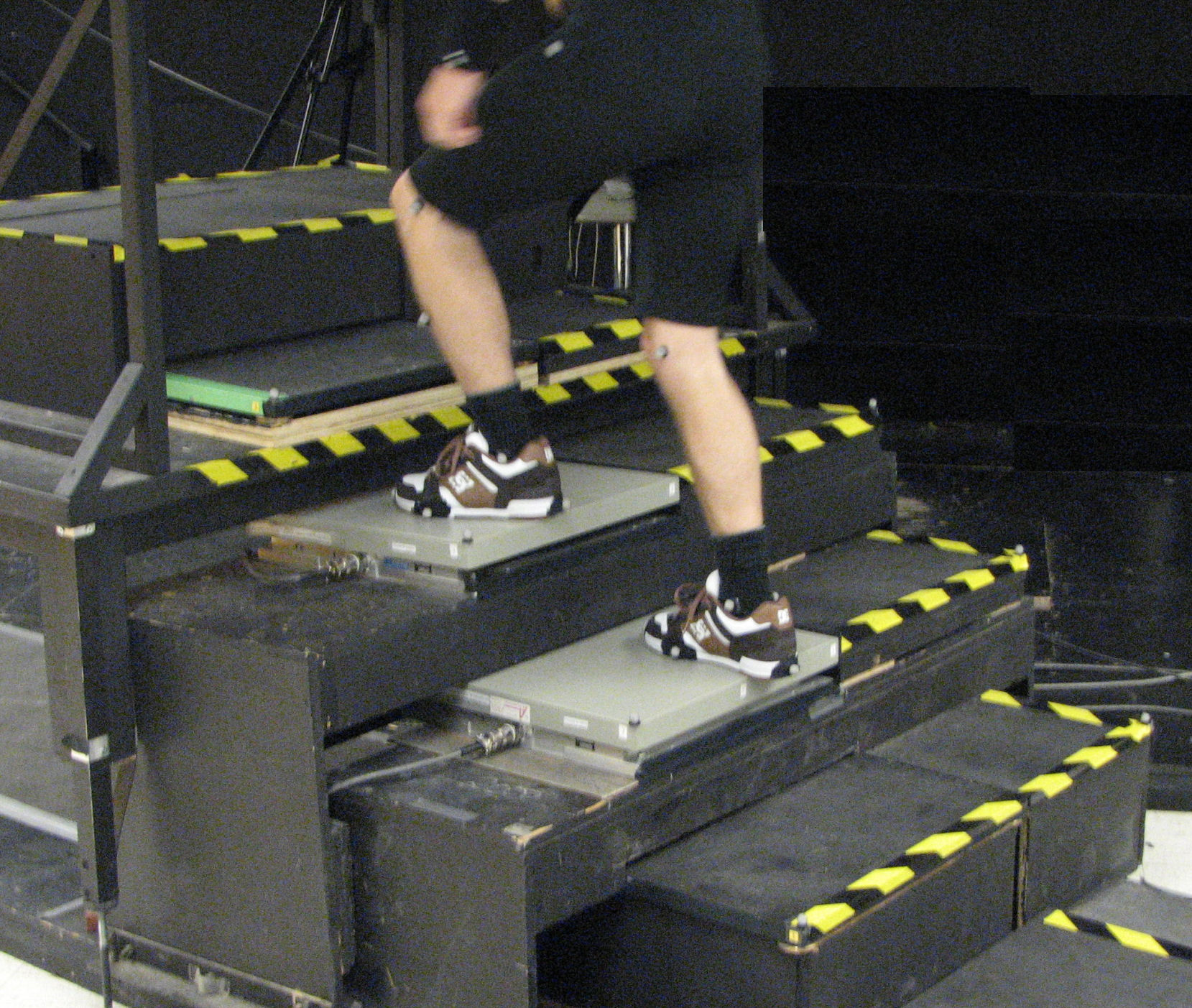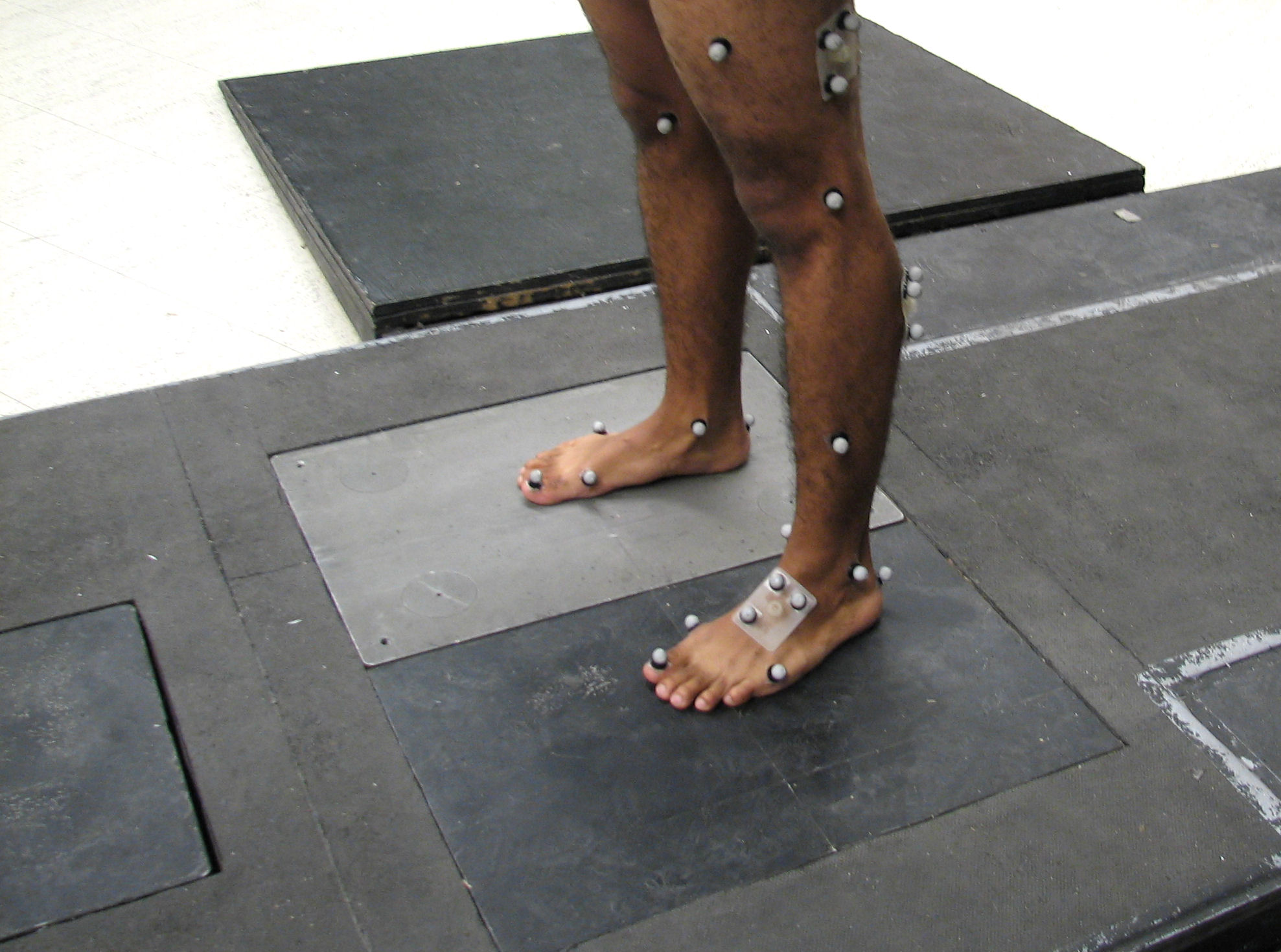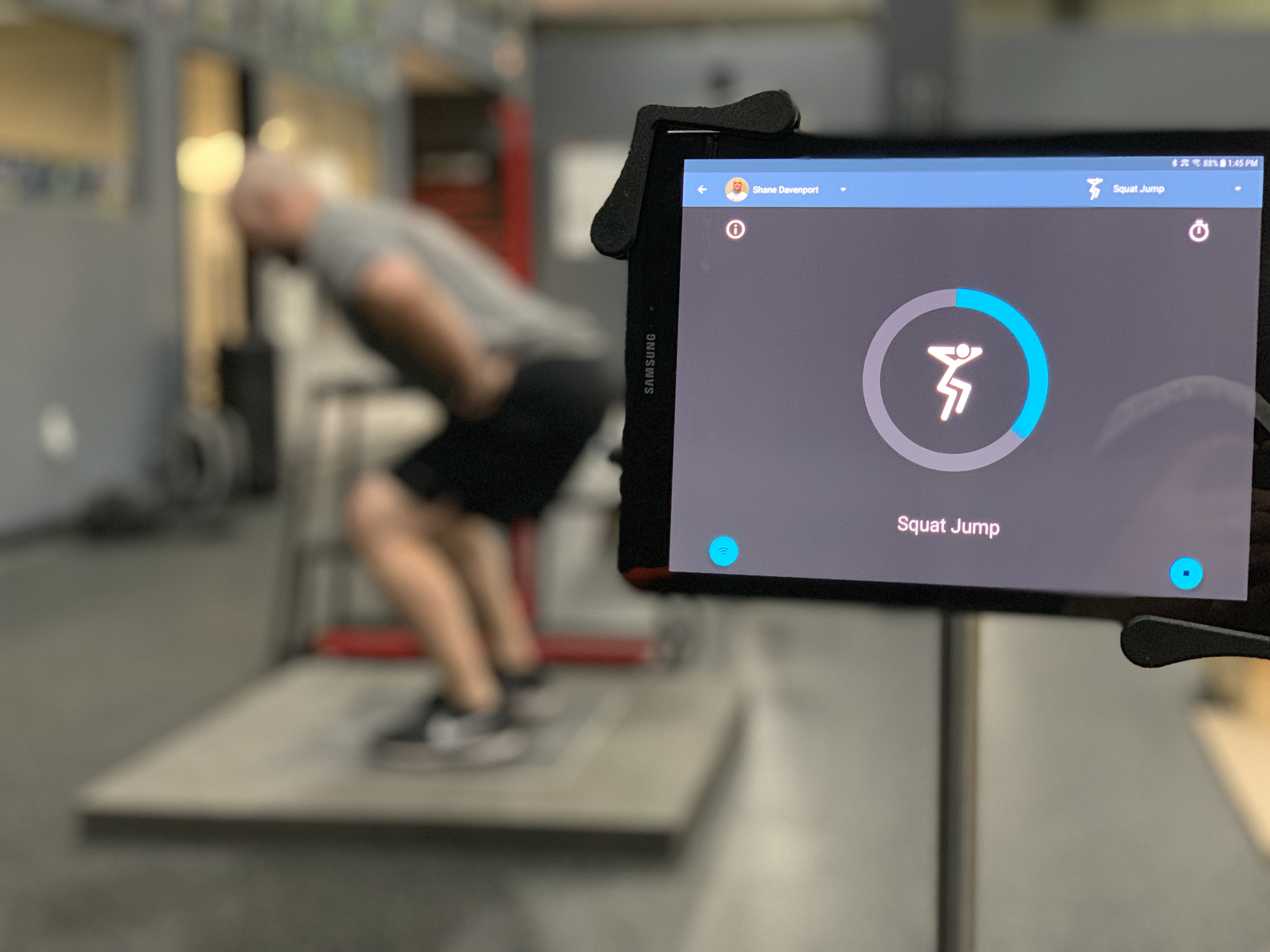Force plate on:
[Wikipedia]
[Google]
[Amazon]



 Force platforms or force plates are
Force platforms or force plates are
A practitioner can use a force plate to assess training needs, readiness to train, and also during the return to play process. Typical force plate assessments in sport include th
countermovement jump
(CMJ), squat jump (SJ)
drop jump
(DJ), countermovement rebound jump, an
isometric mid thigh pull
(IMTP). Practitioners often have trouble understanding which metrics to track when using force plates. A leading Biomechanics, biomechanist out of the
Practitioners often have trouble understanding which metrics to track when using force plates. A leading Biomechanics, biomechanist out of the
'ODSF System'
by Dr. Jason Lake.



measuring instrument
A measuring instrument is a device to measure a physical quantity. In the physical sciences, quality assurance, and engineering, measurement is the activity of obtaining and comparing physical quantities of real-world objects and events. Es ...
s that measure the ground reaction force In physics, and in particular in biomechanics, the ground reaction force (GRF) is the force exerted by the ground on a body in contact with it.
For example, a person standing motionless on the ground exerts a contact force on it (equal to the pers ...
s generated by a body standing on or moving across them, to quantify balance, gait
Gait is the pattern of movement of the limbs of animals, including humans, during locomotion over a solid substrate. Most animals use a variety of gaits, selecting gait based on speed, terrain, the need to maneuver, and energetic efficiency ...
and other parameters of biomechanics
Biomechanics is the study of the structure, function and motion of the mechanical aspects of biological systems, at any level from whole organisms to organs, cells and cell organelles, using the methods of mechanics. Biomechanics is a branch o ...
. Most common areas of application are medicine
Medicine is the science and practice of caring for a patient, managing the diagnosis, prognosis, prevention, treatment, palliation of their injury or disease, and promoting their health. Medicine encompasses a variety of health care p ...
and sports.
Operation
The simplest force platform is a plate with a single pedestal, instrumented as a load cell. Better designs have a pair of rectangular plates, although triangular can also work, one over another withload cell
A load cell converts a force such as tension, compression, pressure, or torque into an electrical signal that can be measured and standardized. It is a force transducer. As the force applied to the load cell increases, the electrical signal change ...
s or triaxial force transducers
A transducer is a device that converts energy from one form to another. Usually a transducer converts a signal in one form of energy to a signal in another.
Transducers are often employed at the boundaries of automation, measurement, and contro ...
between them at the corners.
Like single-force platforms, dual-force platforms can be used to assess performance in double leg tests and strength and power asymmetries in unilateral jump and isometric tests. However, they also provide an additional level of intelligence on neuromuscular status by evaluating the force distribution between limbs during double-limb tests, revealing critical information on strength asymmetries and compensatory strategies.
The simplest force plates measure only the vertical component of the force in the geometric center of the platform. More advanced models measure the three-dimensional components of the single equivalent force applied to the surface and its point of application, usually called the centre of pressure (CoP), as well as the vertical moment of force
In physics and mechanics, torque is the rotational equivalent of linear force. It is also referred to as the moment of force (also abbreviated to moment). It represents the capability of a force to produce change in the rotational motion of th ...
.Robertson DGE, et al., ''Research Methods in Biomechanics.'' Champaign IL:Human Kinetics Pubs., 2004. Cylindrical force plates have also been constructed for studying arboreal locomotion
Arboreal locomotion is the locomotion of animals in trees. In habitats in which trees are present, animals have evolved to move in them. Some animals may scale trees only occasionally, but others are exclusively arboreal. The habitats pose nu ...
, including brachiation
Brachiation (from "brachium", Latin for "arm"), or arm swinging, is a form of arboreal locomotion in which primates swing from tree limb to tree limb using only their arms. During brachiation, the body is alternately supported under each forelimb ...
.
Force platforms may be classified as single-pedestal or multi-pedestal and by the transducer (force and moment transducer
A transducer is a device that converts energy from one form to another. Usually a transducer converts a signal in one form of energy to a signal in another.
Transducers are often employed at the boundaries of automation, measurement, and cont ...
) type: strain gauge
A strain gauge (also spelled strain gage) is a device used to measure strain on an object. Invented by Edward E. Simmons and Arthur C. Ruge in 1938, the most common type of strain gauge consists of an insulating flexible backing which support ...
, piezoelectric sensor
A piezoelectric sensor is a device that uses the piezoelectric effect to measure changes in pressure, acceleration, temperature, strain, or force by converting them to an electrical charge. The prefix ''piezo-'' is Greek for 'press' or 'squeez ...
s, capacitance
Capacitance is the capability of a material object or device to store electric charge. It is measured by the change in charge in response to a difference in electric potential, expressed as the ratio of those quantities. Commonly recognized ar ...
gauge, piezoresistive
The piezoresistive effect is a change in the electrical resistivity of a semiconductor or metal when mechanical strain is applied. In contrast to the piezoelectric effect, the piezoresistive effect causes a change only in electrical resistanc ...
, etc., each with its advantages and drawbacks. Single pedestal models, sometimes called load cells, are suitable for forces that are applied over a small area. For studies of movements, such as gait analysis, force platforms with at least three pedestals and usually four are used to permit forces that migrate across the plate. For example, during walking ground reaction forces start at the heel and finish near the big toe.
Force platforms should be distinguished from pressure measuring systems that, although they too quantify centre of pressure, do not directly measure the applied force vector. Pressure measuring plates are useful for quantifying the pressure patterns under a foot over time but cannot quantify horizontal or shear components of the applied forces.
The measurements from a force platform can be either studied in isolation, or combined with other data, such as limb kinematics
Kinematics is a subfield of physics, developed in classical mechanics, that describes the motion of points, bodies (objects), and systems of bodies (groups of objects) without considering the forces that cause them to move. Kinematics, as a fi ...
to understand the principles of locomotion. If an organism makes a standing jump from a force plate, the data from the plate alone is sufficient to calculate acceleration
In mechanics, acceleration is the rate of change of the velocity of an object with respect to time. Accelerations are vector quantities (in that they have magnitude and direction). The orientation of an object's acceleration is given by ...
, work
Work may refer to:
* Work (human activity), intentional activity people perform to support themselves, others, or the community
** Manual labour, physical work done by humans
** House work, housework, or homemaking
** Working animal, an animal ...
, power
Power most often refers to:
* Power (physics), meaning "rate of doing work"
** Engine power, the power put out by an engine
** Electric power
* Power (social and political), the ability to influence people or events
** Abusive power
Power may ...
output, jump angle, and jump distance using basic physics. Simultaneous video measurements of leg joint angles and force plate output can allow the determination of torque, work and power at each joint using a method called inverse dynamics Inverse dynamics is an inverse problem. It commonly refers to either inverse rigid body dynamics or inverse structural dynamics. Inverse rigid-body dynamics is a method for computing forces and/or moments of force (torques) based on the kinematic ...
.
Recent developments in technology
Advancements in technology have allowed force platforms to take on a new role within the kinetics field. Traditional laboratory-grade force plates cost (usually in the thousands) have made them very impractical for the everyday clinician. However,Nintendo
is a Japanese multinational video game company headquartered in Kyoto, Japan. It develops video games and video game consoles.
Nintendo was founded in 1889 as by craftsman Fusajiro Yamauchi and originally produced handmade playing cards. ...
introduced the Wii Balance Board
The is an accessory for the Wii and Wii U video game consoles. Unlike the usual balance board for exercise, it does not rock but instead tracks the user's center of balance. Along with Wii Fit, it was introduced on July 11, 2007 at the Electron ...
(WBB) (Nintendo, Kyoto, Japan) in 2007 and changed the structure of what a force plate can be. By 2010, it was found that the WBB is a valid and reliable instrument to measure the weight distribution, when directly compared to the "gold-standard" laboratory-grade force plate, while costing less than $100. More so, this has been verified in both healthy and clinical populations. This is possible due to the four force transducers found in the corners of the WBB. These studies are conducted using customized software, such as LabVIEW
Laboratory Virtual Instrument Engineering Workbench (LabVIEW) is a system-design platform and development environment for a visual programming language from National Instruments.
The graphical language is named "G"; not to be confused with G-cod ...
(National Instruments, Austin, TX, USA) that can be integrated with the board to be able to measure the amount of body sway or the CoP path length during trials for time. The other benefit to having a posturography Posturography is the technique used to quantify postural control in upright stance in either static or dynamic conditions. Among them, Computerized dynamic posturography (CDP), also called test of balance (TOB), is a non-invasive specialized clinic ...
system, such as the WBB, is that it is portable so clinicians around the world are able to measure body sway quantitatively, instead of relying on the subjective, clinical balance assessments currently in use.
According to Digital Trends, Nintendo's Wii and the WiiU successor product have both been discontinued as of March 2016. This exemplifies one of the issues arising from the adoption of inexpensive off-the-shelf consumer products re-purposed for medical measurements. Further issues with such adoption arise from the regulatory and standards bodies around the world. Force platforms used for measuring a patients balance and mobility performance are classified by the U.S. FDA (United States Food and Drug Administration) as Class I Medical Devices. As such they must be manufactured to certain quality standards as established by ISO (International Standards Organization)ISO 9001 Quality Management Principles or ISO 13485 Medical Device Quality Management Systems. The European Union's MDD (Medical Device Directive) also classifies force platforms used for medical measurements as Class I medical devices and require medical CE certification for importation and use in the European Union for such medical applications. A notable recent standard, ASTM F3109-16 Standard Test Method for Verification of Multi-Axis Force Measuring Platforms presents a framework for manufactures and users to verify the performance of Force platforms across the extents of their working surface. Standards such as these are used by manufactures of medical grade force platforms to ensure that measurements made on a patient population are accurate, repeatable and reliable. In short, inexpensive consumer grade entertainment components may be a poor choice for medical measurements given the lack of continuity of such products and their legal, regulatory and perhaps quality unsuitability for such applications.
Use in sport
Force plates are commonly used in sport to access an athlete's force producing capabilities, strength and imbalancA practitioner can use a force plate to assess training needs, readiness to train, and also during the return to play process. Typical force plate assessments in sport include th
countermovement jump
(CMJ), squat jump (SJ)
drop jump
(DJ), countermovement rebound jump, an
isometric mid thigh pull
(IMTP).
 Practitioners often have trouble understanding which metrics to track when using force plates. A leading Biomechanics, biomechanist out of the
Practitioners often have trouble understanding which metrics to track when using force plates. A leading Biomechanics, biomechanist out of the University of Chichester
, mottoeng = By teaching, we learn
, type = Public
, established = 2005
, administrative_staff = 600
, vice_chancellor = Jane Longmore
, city = Chichester, West Sussex
, country = England, UK
, ...
has created a system for easily selecting force plate metrics. This system is called th'ODSF System'
by Dr. Jason Lake.
History
Chronology •1976• Advanced Mechanical Technology, Inc. (AMTI) constructed the first commercially available strain gauge force plate for gait analysis at the biomechanics laboratory of the Boston Children's Hospital.Simon P.R. Jenkins (2005) Sports Science Handbook The Essential Guide to Kinesiology, Sport and Exercise Science Volulme 1: A-H, Page 294 •2017• Hawkin Dynamics created the first wireless force platform and mobile app.See also
* Gait analysis *Posturography Posturography is the technique used to quantify postural control in upright stance in either static or dynamic conditions. Among them, Computerized dynamic posturography (CDP), also called test of balance (TOB), is a non-invasive specialized clinic ...
References
{{reflist Physiological instruments Biomechanics de:Biomechanik#Kraftmessplatten